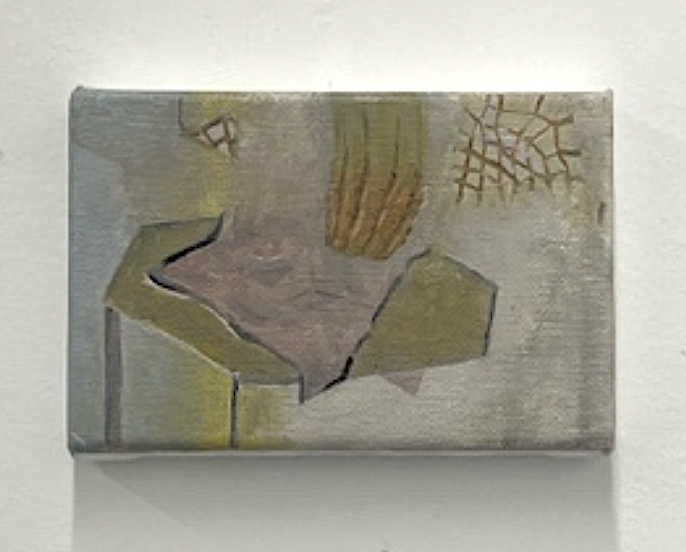In a letter from Egypt in 1850, French novelist Gustave Flaubert writes:
Here we are then, in Egypt […] What can I say? How can I write to you about it? I have scarcely recovered from my initial astonishment. […] The detail gets hold of you, grips you tight, squeezes you, and the more engrossing it is the less are you able to take in the ensemble. Then, little by little, it begins to harmonize and fall into place according to the laws of perspective.1
“How can I write to you about it?” At loss before a city that stands so close, it touches, how could Flaubert write of Cairo? French historian Roger Le Tourneau proposes a response upon his encounter of the Old City of Fez: to exit it.2 In a city whose high walls and gated streetscapes continuously slip his sight between permission and prohibition,3 it is only from the outskirts of Fez, from a hillside cemetery outside the walls, when the Old City stretches before him into a vanishing point, does Tourneau begin to see. Only then can he begin describing. A significant tendency within modern European viewership, seeing often required exiting, it demanded to be outside of a space that organized itself before you. The accounts of Flaubert and Tourneau reflect a history of viewership emblemized by geometric perspective and the appeal for an all-encompassing, rational (and albeit colonial) eye. Within this tradition, seeing mandated distance, dictated by a desire for a point of view.4 It is to see with a singular “fixed eye”5 – to remove oneself not simply from the space wished to be viewed, but from one’s very body. A disembodied monocle which sees without being seen.6
Thus, to paint a space – even to write of it – was often with the intention of reconstructing it as a ground: stable enough to place within it all figures, convincing enough to enter. Yet when stepping into the exhibition painting full of empty, empty of full, by Amy Todman in Gallery405, we are offered a compelling exploration that engages with, and perhaps subtly challenges, this tradition of re-presenting space.

The paintings of Amy Todman which dot the walls of Gallery405 are twelve canvases small in scale, painted in a softly saturated palette that does not fight for presence against the stark whiteness of the space. Their size draws one closer. They are paintings of a room – in some of them that is clear, in others less so. The composition and motifs repeat throughout: a table center, a set of stairs, a window. to put in the eye (fig.1), hung by the entrance, is the most stable of the images: walls enclose a space, stretching before the viewer and leading our gaze towards a window. In the two paintings which follow, perspective can still be discerned, only now slightly destabilized: a horizon line askew in the first, absent in the second. By the next set of four paintings (fig.2), the discipline of the perspective plane is almost completely lost, making strained appearances in ungrounded staircases and faint interrupted attempts to distinguish floors from walls. As one walks through the exhibition, limbs materialize and dematerialize, three-legged tables find balance, and staircases float. Walls oscillate between opaqueness and transparency, and floors dissolve into specters of other rooms.

Throughout the exhibition, perspective is continually lost and regained. The paintings strike me with a particular question: How do you paint a space that is not seen before you, but around you? In the paintings of Amy Todman, attempts to organize the room into a picture plane fail to be held for too long. The eye is incapacitated; no longer disembodied as the primary organ of vision, it returns to the corporeal. Perspective finds no foothold, and thus one is faced with blind spots that can no longer be filled: floors, walls and ceilings struggle to appear simultaneously, tables lose legs and corners, horizon lines shift continuously.

Seeing is distributed to touch. Space is not configured to ‘ground’ the objects within it, but rather crowds my line of sight, as if almost bumping into me. Now, the paintings of Amy Todman do not overtly lend themselves to textures that invite tactility, except for the occasional impasto or curdled oil skin. Yet, the distance from which these small paintings are viewed invite more haptic senses to be engaged. Standing before the kind (fig.3), the smallest of the twelve paintings, I am merely centimeters away. As I look at the image, a hand reaches down from outside the canvas towards a two-legged hexagonal table, a drape recedes upwards and dissolves into a cloudy ambiguity. As I look at the image, the weaving of the canvas meets me at the surface. The image, opaque, once again denies me perspectiva – the ability to see through.7 Standing this close, my vision occurs at the surface, where the image, the canvas, reaches out to grip me. Granting my sight transparency one moment, opaqueness in the next, it is a visuality which humbles the desire for an “all-seeing” eye.
How do you paint a space that is not seen before you, but around you? The images in painting full of empty, empty of full by Amy Todman take a step towards such an endeavour. Seen individually, they are paintings of rooms which are not always discernible. Walking through the exhibition, drawing closer into each image, we are confronted with attempts to paint a space whilst refusing omniscient distance. The paintings grapple to see through eyes which blink within a moving body. In the work of Amy Todman, to see a room that surrounds you is to relinquish the breadth of your vision to the mercy of that room. It is to be so close that you risk not only to be seen by the space, but to be touched by it.
Exhibition Details
Amy Todman, painting full of empty, empty of full
February 17 - 27, 2025, Gallery405, American University of Beirut